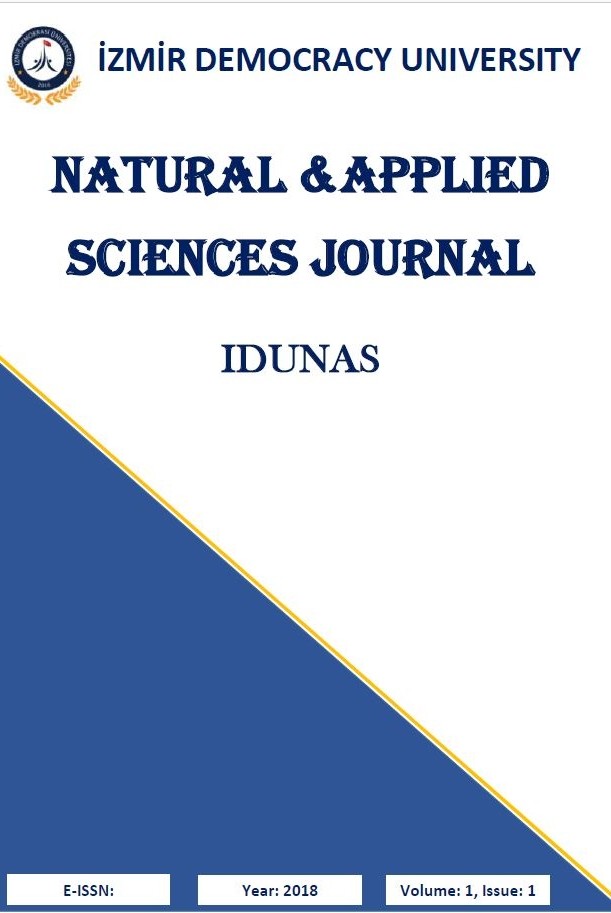Elektroeğirme Yöntemi ile Fibröz Doku İskelelerinin Üretimi
nanofiber, doku iskelesi, doku mühendisliği, Elektroeğirme, doku mühendisliği
Fabrication of Two- and Three- Dimensional Fibrous Mats by Electrospinning Method
Electrospinning, nanofiber, fibrous mat, tissue scaffold, tissue engineering,
___
- D. Li and Y. Xia, “Electrospinning of nanofibers: reinventing the wheel?” Advanced materials, vol. 16, no. 14, pp. 1151–1170, 2004.
- Z.-M. Huang, Y.-Z. Zhang, M. Kotaki, and S. Ramakrishna, “A review on polymer nanofibers by electrospinning and their applications in nanocomposites,” Composites science and technology, vol. 63, no. 15, pp. 2223–2253, 2003.
- L. S. Nair, S. Bhattacharyya, and C. T. Laurencin, “Development of novel tissue engineering scaffolds via electrospinning,” Expert opinion on biological therapy, vol. 4, no. 5, pp. 659–668, 2004.
- S.Chew,Y.Wen,Y.Dzenis,andK.W.Leong,“Theroleofelectrospinningintheemergingfieldofnanomedicine,”Current pharmaceutical design, vol. 12, no. 36, pp. 4751–4770, 2006.
- S. Kumbar, R. James, S. Nukavarapu, and C. Laurencin, “Electrospun nanofiber scaffolds: engineering soft tissues,” Biomedical materials, vol. 3, no. 3, p. 034002, 2008.
- T. J. Sill and H. A. von Recum, “Electrospinning: applications in drug delivery and tissue engineering,” Biomaterials, vol. 29, no. 13, pp. 1989–2006, 2008.
- B. Mavis, T. T. Demirtas¸, M. Gümüş derelioğlu, G. Gündüz, and Ü. Çolak, “Synthesis, characterization and osteoblastic activity of polycaprolactone nanofibers coated with biomimetic calcium phosphate,” Acta biomaterialia, vol. 5, no. 8, pp. 3098–3111, 2009.
- M. Şimşek, M. Capkın, A. Karakeçili, and M. Gümüs¸derelio˘glu, “Chitosan and polycaprolactone membranes patterned via electrospinning: effect of underlying chemistry and pattern characteristics on epithelial/fibroblastic cell behavior.” Journal of biomedical materials research. Part A, vol. 100, no. 12, pp. 3332–3343, 2012.
- S. H. Lim and H.-Q. Mao, “Electrospun scaffolds for stem cell engineering,” Advanced drug delivery reviews, vol. 61, no. 12, pp. 1084–1096, 2009.
- M. Şimşek, “Nanofiber-desenli polimerik membranlar: Yüzey kimyası, topografisi ve hücresel etkiles¸imler,” 2014.
- A. Vaseashta, “Controlled formation of multiple taylor cones in electrospinning process,” Applied Physics Letters, vol. 90, no. 9, p. 093115, 2007.
- S. Paruchuri and M. P. Brenner, “Splitting of a liquid jet,” Physical review letters, vol. 98, no. 13, p. 134502, 2007.
- W. Tomaszewski and M. Szadkowski, “Investigation of electrospinning with the use of a multi-jet electrospinning head,” Fibres and Textiles in Eastern Europe, vol. 13, no. 4, p. 22, 2005.
- R. Bocanegra, D. Galán, M. Márquez, I. Loscertales, and A. Barrero, “Multiple electrosprays emitted from an array of holes,” Journal of Aerosol Science, vol. 36, no. 12, pp. 1387–1399, 2005.
- R. Nayak, R. Padhye, I. L. Kyratzis, Y. B. Truong, and L. Arnold, “Recent advances in nanofibre fabrication techniques,” Textile Research Journal, vol. 82, no. 2, pp. 129–147, 2012.
- Y. YAMASHITA, F. Ko, A. TANAKA, and H. MIYAKE, “Characteristics of elastomeric nanofiber membranes produced by electrospinning,” Journal of Textile Engineering, vol. 53, no. 4, pp. 137–142, 2007.
- F. Li, Y. Zhao, and Y. Song, “Core-shell nanofibers: nano channel and capsule by coaxial electrospinning,” in Nanofibers. InTech, 2010.
- ISSN: 2645-9000
- Başlangıç: 2018
- Yayıncı: İzmir Demokrasi Üniversitesi
Yüksek İrtifada Yapılan Egzersizin Oksidatif Stres Düzeyine Etkisi
Elektroeğirme Yöntemi ile Fibröz Doku İskelelerinin Üretimi
Betonarme Binalarda Deprem Derz Mesafesinin İncelenmesi
Murat Emre KARTAL, Muhammet Karabulut, Elif Özil, Rukiye Ünlü
Kanser Tanı ve Tedavisinde Manyetik Nanopartikülker
